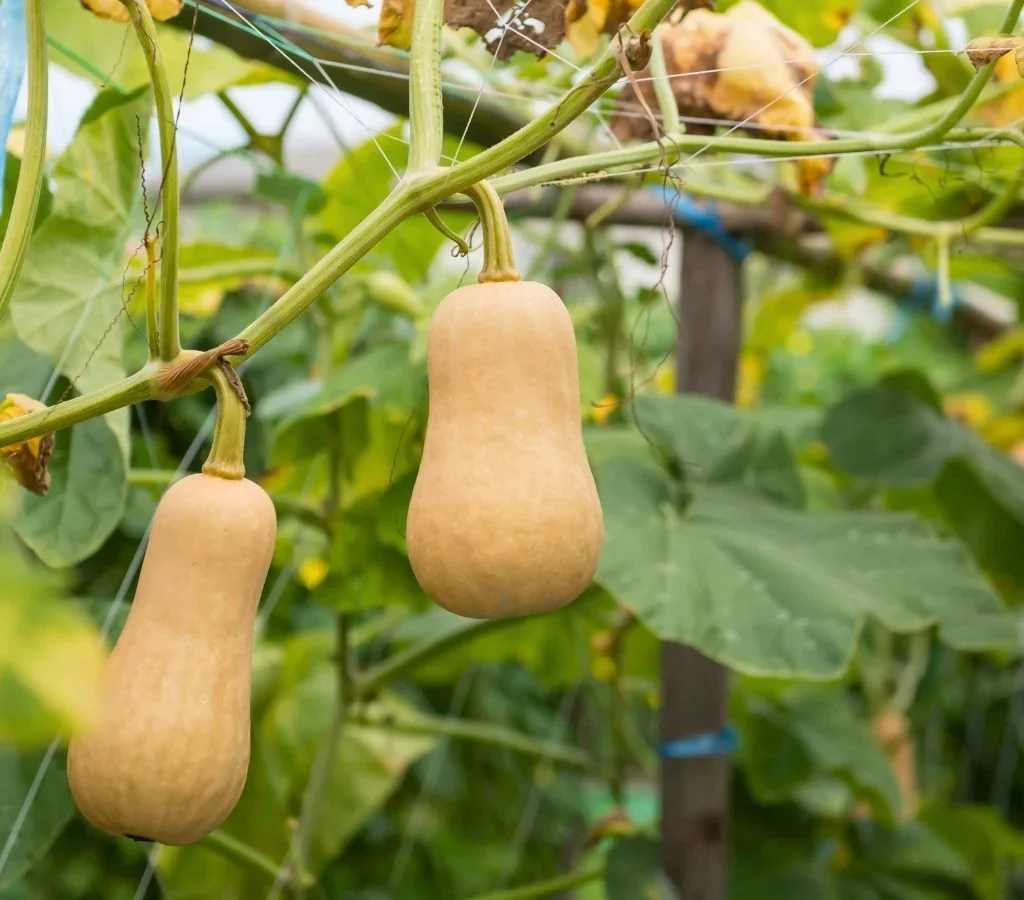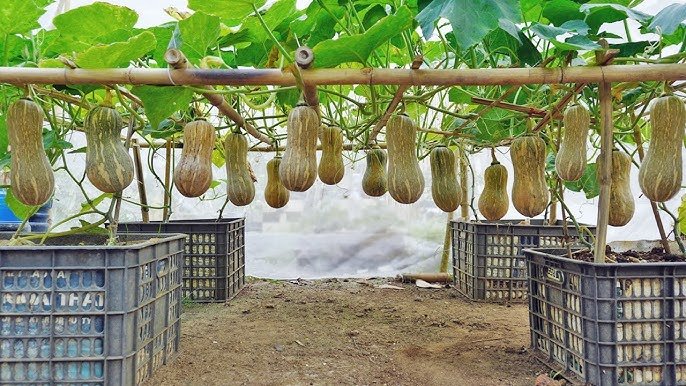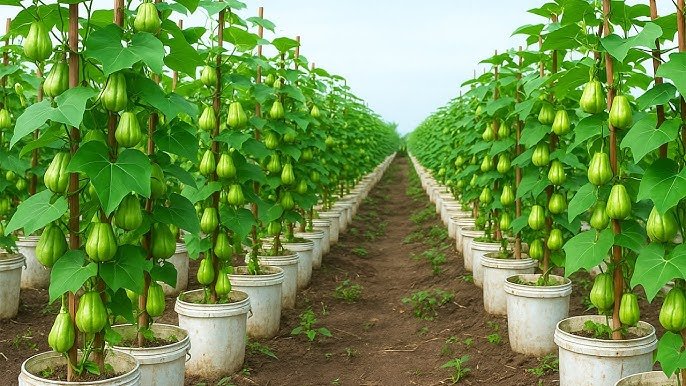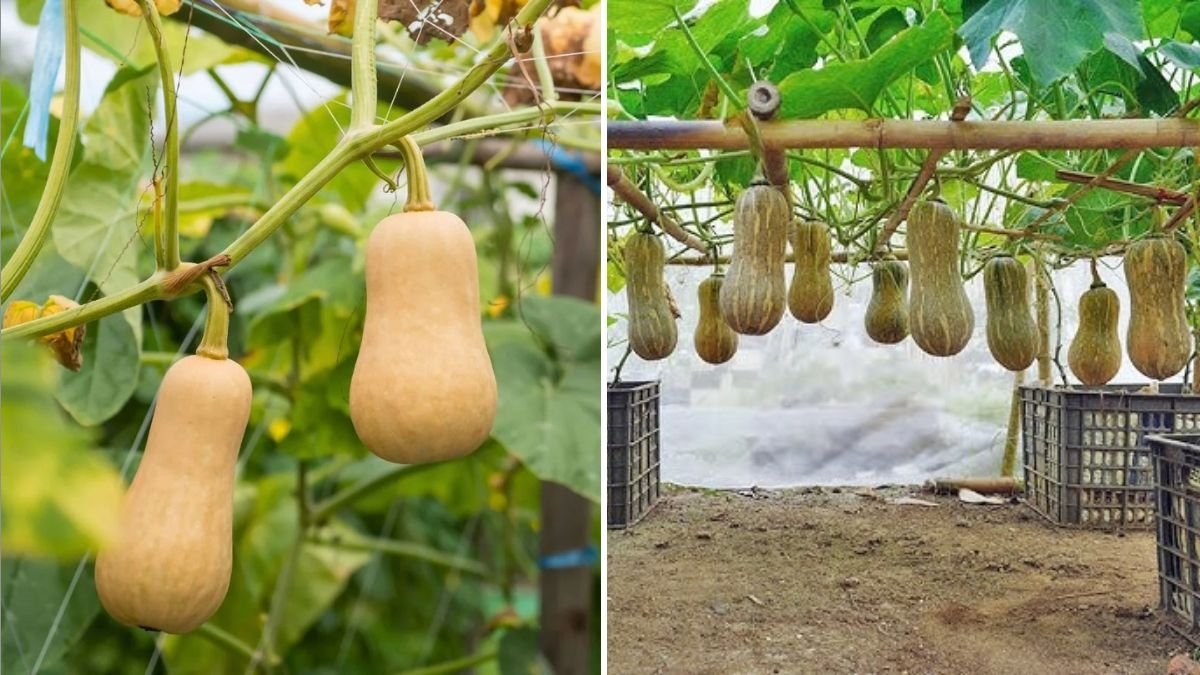When the crisp autumn air rolls in and the leaves turn fiery red and gold, there’s one vegetable that perfectly captures the season’s warmth and comfort — the butternut squash. Sweet, nutty, and incredibly versatile, this creamy orange squash has become a staple in American kitchens, especially when the holidays approach. Whether it’s roasted, puréed into a velvety soup, or mashed into a hearty side, butternut squash brings both nutrition and nostalgia to the table.
In this comprehensive guide, we’ll explore everything you need to know about butternut squash — from how to select and store it to easy cooking methods, health benefits, and even how to grow it in your backyard.
What Is Butternut Squash?

Butternut squash (Cucurbita moschata) is a type of winter squash, part of the same family as pumpkins and zucchinis. It has a long, bell-like shape, smooth beige skin, and bright orange flesh. Unlike summer squashes like zucchini, butternut squash is harvested when its skin hardens — which allows it to store well through the cold months.
Originally native to Central and South America, butternut squash became popular in the U.S. during the 20th century and is now one of the most widely grown squashes in American gardens.
How to Choose the Perfect Butternut Squash
When picking out a butternut squash at your local farmers’ market or grocery store, here’s what to look for:
- Color: Choose a squash with a matte beige skin — not shiny or green. Shiny skin means it was picked too early.
- Texture: The skin should be smooth, firm, and free from cuts or soft spots.
- Weight: Pick one that feels heavy for its size — it’ll be full of flavor and moisture.
- Stem: A dry, intact stem helps the squash last longer.
Pro Tip: Avoid squashes with wrinkled or shriveled skin — those are signs of dehydration or old age.
How to Peel and Cut Butternut Squash Safely

One of the biggest hurdles for home cooks is cutting this hard vegetable. But don’t worry — here’s a foolproof step-by-step:
- Wash the squash and pat dry.
- Slice off both ends using a sharp chef’s knife.
- Peel with a sturdy vegetable peeler. The skin is thick, so you may need a few passes.
- Cut in half lengthwise and scoop out the seeds with a spoon.
- Dice or cube according to your recipe.
Tip: Microwave the whole squash for 2–3 minutes before cutting — this softens the skin just enough to make peeling safer and easier.
Delicious Ways to Cook Butternut Squash
Butternut squash’s naturally sweet, nutty flavor shines in both savory and sweet dishes. Here are some popular American ways to cook it:
1. Roasted Butternut Squash
- Cut into cubes, toss with olive oil, salt, pepper, and herbs like rosemary or thyme.
- Roast at 400°F for 25–30 minutes until golden and caramelized.
Perfect as a side dish or tossed into salads and grain bowls.
2. Butternut Squash Soup
- Sauté onions and garlic, add cubed squash and broth, and simmer until tender.
- Blend until smooth and swirl in cream or coconut milk.
- Season with nutmeg and cinnamon for a cozy fall flavor.
This creamy soup is a holiday classic across American households.
3. Butternut Squash Mash
- Boil or steam chunks of squash until soft.
- Mash with butter, salt, and a drizzle of maple syrup for a naturally sweet side.
4. Butternut Squash Pasta Sauce
- Blend roasted squash with garlic, olive oil, and Parmesan.
- Toss with pasta for a creamy, nutrient-rich alternative to Alfredo sauce.
5. Stuffed Butternut Squash
- Halve lengthwise, scoop out a bit more flesh, and fill with quinoa, cranberries, pecans, and spinach.
- Roast until the filling is golden.
A perfect vegetarian main dish for Thanksgiving!
Nutrition & Health Benefits

Butternut squash isn’t just delicious — it’s a nutritional powerhouse. Here’s why you should add it to your weekly menu:
| Nutrient | Benefits |
|---|---|
| Vitamin A | Supports vision and immune health |
| Vitamin C | Boosts collagen production and immunity |
| Fiber | Aids digestion and promotes satiety |
| Potassium | Helps regulate blood pressure |
| Antioxidants | May reduce inflammation and protect against chronic diseases |
A single cup of cooked butternut squash provides 450% of your daily Vitamin A needs and less than 100 calories — making it a guilt-free comfort food!
How to Grow Butternut Squash in Your Garden
If you’ve got a sunny spot in your backyard, growing butternut squash can be incredibly rewarding. Here’s how:
1. Planting Time
- In the U.S., plant seeds after the last frost, typically between April and June, depending on your region.
- Butternut squash loves warm weather and needs at least 6–8 hours of sunlight daily.
2. Soil Requirements
- Use well-drained, nutrient-rich soil with compost or aged manure.
- Ideal pH: 6.0–6.8.
3. Spacing & Watering
- Plant seeds 1 inch deep and space plants 3–4 feet apart.
- Keep the soil consistently moist but not waterlogged.
4. Pests & Care
- Watch out for squash bugs, vine borers, and aphids.
- Mulch around the base to retain moisture and deter weeds.
5. Harvesting
- Squash is ready when the skin turns deep tan and the stem is hard and dry.
- Cut with a few inches of stem intact to extend shelf life.
Stored in a cool, dry place, butternut squash can last up to 3 months — perfect for enjoying all winter long!
Butternut Squash in American Cuisine

Across the U.S., butternut squash finds its way into countless regional dishes:
- New England: Creamy squash bisques and roasted squash with maple syrup.
- Southern states: Mashed squash with butter and brown sugar.
- West Coast: Butternut squash tacos or grain bowls with kale and quinoa.
- Midwest: Squash casseroles and hearty fall soups.
This versatility makes it one of America’s most beloved seasonal vegetables — equally at home in fine dining or a cozy home kitchen.
Sweet Side: Butternut Squash Desserts
Did you know you can use butternut squash in desserts, too? It’s a great substitute for pumpkin! Try these ideas:
- Butternut Squash Pie: Use puréed squash instead of pumpkin for a lighter, naturally sweet filling.
- Muffins & Bread: Add mashed squash to muffin batter for moisture and flavor.
- Squash Cheesecake: Blend into a creamy cheesecake base for a fall-inspired twist.
Its subtle sweetness and smooth texture make butternut squash an excellent base for baking and desserts.
Flavor Pairings That Elevate Butternut Squash
Butternut squash pairs beautifully with a variety of herbs and spices. Try these combinations:
- Savory: Sage, thyme, rosemary, garlic, black pepper, and olive oil.
- Sweet: Cinnamon, nutmeg, brown sugar, and maple syrup.
- Toppings: Feta cheese, toasted pecans, caramelized onions, or pomegranate seeds for extra flair.
Quick Recipe: Roasted Butternut Squash & Kale Salad

Ingredients:
- 2 cups cubed butternut squash
- 1 tbsp olive oil
- 2 cups chopped kale
- ¼ cup dried cranberries
- ¼ cup feta cheese
- 1 tbsp balsamic glaze
Instructions:
- Roast squash at 400°F for 25 minutes.
- Toss kale with olive oil and massage to soften.
- Combine roasted squash, kale, cranberries, and feta.
- Drizzle with balsamic glaze and serve warm or cold.
This salad is a perfect balance of sweet, salty, and tangy — a quick, healthy lunch or dinner option!
Final Thoughts
Butternut squash isn’t just a fall favorite — it’s a year-round hero packed with flavor, nutrition, and versatility. Whether you’re roasting it for dinner, blending it into a creamy soup, or growing it in your backyard, this humble vegetable can transform everyday meals into something comforting and special.
From farm to table, butternut squash captures the heart of American comfort food — simple, nourishing, and endlessly adaptable. So next time you see this golden gem in your grocery aisle, grab it and let your kitchen fill with the cozy aromas of fall.






Leave A Comment